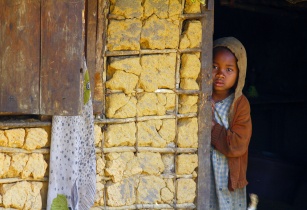The Food and Agriculture Organisation of the United Nations (FAO) and the United Nations World Food Programme (WFP) have warned of acutely food insecure people in West and Central Africa as the number has now crossed 28 million and points toward a further deterioration if support to stem the spread of hunger is not ramped up
According to a new released Cadre Harmonisé (CH) report on food security, in the Sahel and West Africa, 26 million people currently do not have sufficient food during the ongoing harvest season (October-December 2021). According to a separate analysis by the Integrated Food Security Phase Classification (IPC), an additional two million people in the Central Africa Republic are also acutely food insecure during the same period. This is the largest number of people facing levels of high acute food insecurity in West and Central Africa recorded since 2014, with levels of acute malnutrition exceeding the 15% emergency threshold in parts of Burkina Faso, Chad, Mali, Mauritania, and Niger.
Surging hunger is being driven by protracted conflict, economic disruptions linked to the COVID-19 pandemic, limited access to basic social services, and soaring food prices, reaching a ten-year high this month. A poor 2021 rainy season has also affected crop and pasture production in some areas.
FAO and WFP are urging regional leaders and their partners to step up to meet immediate needs and address the main drivers of food insecurity in the region. Both the CH and IPC reports warn that without immediate, efficient, and coordinated action, the number of people who will not know where their next meal will come from will reach 35.7 million in the Sahel and West Africa and 2.3 in CAR through June to August 2022 - a 23% increase compared with this year’s lean season (June to August 2021). These projections include 2.5 million people in emergency (IPC/CH Phase 4) and 13 550 men, women and children in catastrophe or famine-like conditions (IPC/CH Phase 5) during the 2022 lean season when food is most scarce.
“Food security indicators are all pointing in the wrong direction in this region, and we’re seeing hunger at its highest level in almost eight years. We are facing a troubling funding outlook with needs outpacing available funding. This is the time to ramp up our assistance, not cut rations,” said Chris Nikoi, WFP’s regional director for Western Africa.
Despite the lifting of COVID-19 restrictions, the economic impact of the pandemic is still unfolding in the region with a constrained fiscal space, increased public debt, rampant inflation, and rising food prices, which have led to a 3% increase in extreme poverty in 2021.





